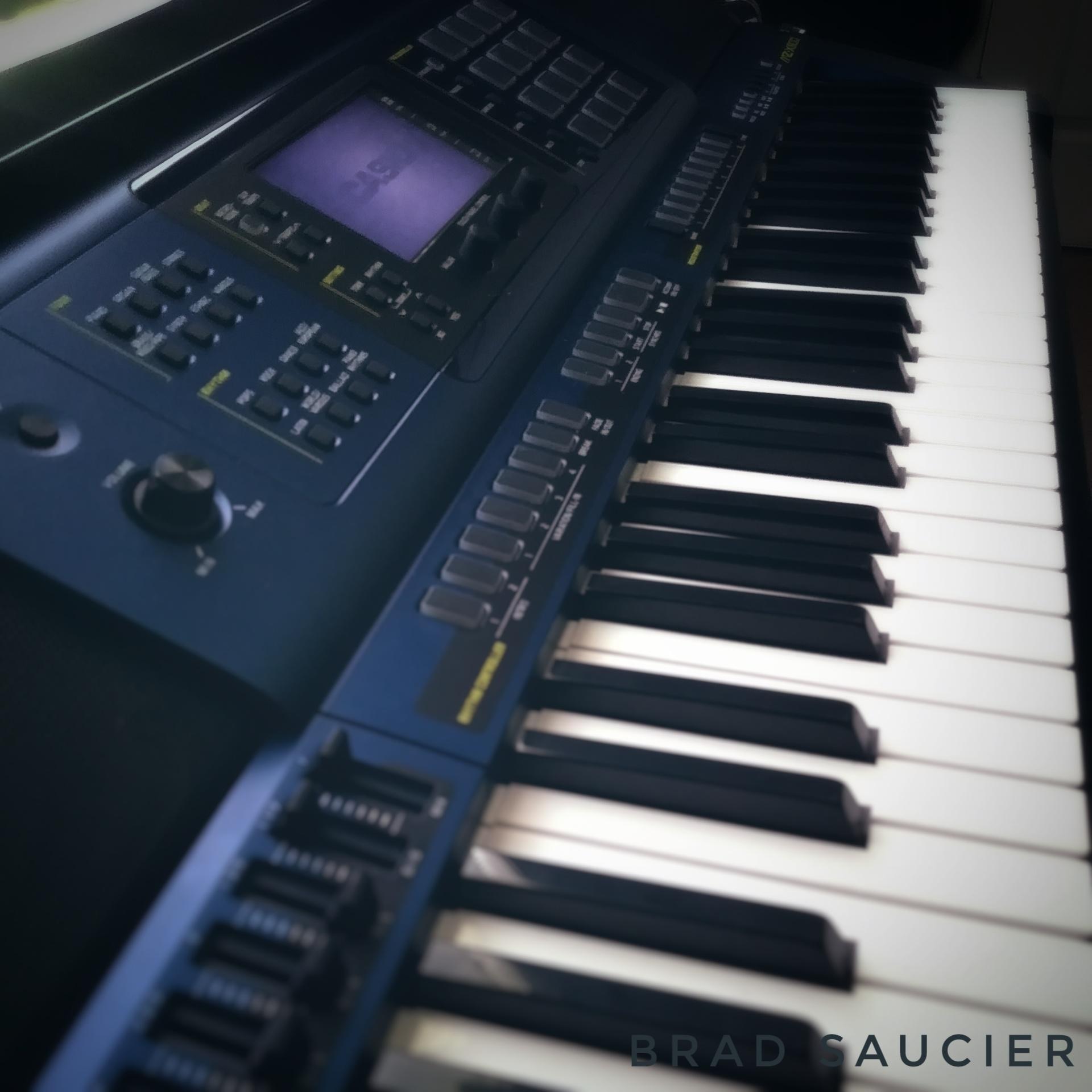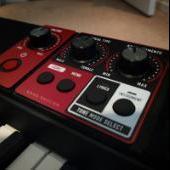-
Posts
8,736 -
Joined
-
Last visited
Community Answers
-
Brad Saucier's post in Does Auto Resume work without power? was marked as the answer
Yes. Memory is like a USB flash drive or SD card. It retains data without power.
-
Brad Saucier's post in Changing sounds with iPad and OnSong was marked as the answer
I'm pasting the following reply I wrote yesterday for another model, but it's the same for this model.
It's difficult to explain what Casio has done without using fancy charts and long winded explanations. Hopefully I can help clear it up with the following. I'll try to be a concise as possible.
MIDI input is routed to its own sound engine (I call the MIDI sound engine). The keyboard itself is routed to it's own (I call the local sound engine).
Most people assume (including myself at one time) that the tones you hear when playing the keys can be directly controlled by MIDI. With that assumption, one would think you can simply send MIDI program changes into the keyboard to change tones. Not exactly. Why? MIDI input does not communicate with the local sound engine. This is so standard MIDI files can play as backing tracks while the keyboard can be used to play along, without interference.
A workaround would be using a virtual MIDI loop back into the CT-S1, and merge program change data into the loop. I'm not familiar with iPad apps for this. I know of at least one Android app that can do it, but it's not very intuitive. Turn off local control on the keyboard. The MIDI sound engine is capable of generating all of the tones heard by the local sound engine, so it will perform as if local control is still on, except it's not. You're now controlling the MIDI sound engine by way of the keyboard itself as a MIDI controller. 🤯
In that scenario, it might be easier to think of MIDI input as a separate rack mount module, and the keyboard itself as the MIDI controller. I hope this helps lessen some of the confusion.
-
Brad Saucier's post in Pedalboards and Keyboards was marked as the answer
The CTX series features a USB to HOST MIDI connection. A host is required. That can be a computer, mobile smart device, or host adapter. This is needed between the pedalboard and keyboard. Also, USB MIDI input addresses a different section of the sound engine, not connected to what you hear when you play the keyboard itself, so keep that in mind. You can use the mixer to select tones for the MIDI portion of the sound engine (labeled "song solo" parts in the mixer).
Using a MIDI pedalboard is possible with software workarounds. I'm not familiar with all of the software possibilities for this, but I know DAW software can route one MIDI controller to any MIDI sound source. I'm sure some mobile applications can as well.
-
Brad Saucier's post in Generally speaking, how does the PX5s perform in hot outdoor conditions was marked as the answer
In the history of the PX-5S Facebook group, I've never known a PX-5S to have any issues with outdoor temperatures at any extreme, hot or cold. I think the white plastic body of the instrument helps with heat control, as opposed to a black metal body. In general, I think the PX runs cool anyways.
-
Brad Saucier's post in pianos get too loud was marked as the answer
When you said the issue was on higher registers, that made me think your monitor speakers are probably favoring treble instead of bass. Piano tones would accentuate this trait.
-
Brad Saucier's post in Ambient Piano was marked as the answer
A piano sound with a subtle hint of an early reflection type effect. It evokes the sense of hearing sounds reflect within the cabinet of the piano itself, from the perspective of the player sitting at the piano.
-
Brad Saucier's post in App connection was marked as the answer
In the corner of the screen in the app is a settings button. In that section you can toggle app sounds off.
-
Brad Saucier's post in Modifying any sounds using edit, shows exclamation mark, cannot save in registration was marked as the answer
The exclamation mark means the tone has been edited and has not been saved as a user tone. There is a write button in the editing menu to do this. Follow the menus to complete the process. If this still doesn't work, you'll probably want to explain what you're doing in more detail, perhaps add a video.
-
Brad Saucier's post in Noisy black keys on new keyboard. was marked as the answer
It is under warranty right now. If you perform your own service on the keyboard in any way, you'll risk invalidating the warranty. Since it's only a week old, I suggest contacting the dealer you purchased it from for assistance.
-
Brad Saucier's post in GP510 Grand Hybrid stuck on Welcome screen was marked as the answer
Make sure the only thing connected to the piano is a power supply cord. Disconnect any USB cable or USB flash drive. If that fails to solve it....
It sounds like something a technician should look at. I suggest contacting your dealer or Casio support in your area for assistance. Your piano is probably covered under warranty. The warranty is 5 years.
-
Brad Saucier's post in Reverb/Chorus with knobs (PX-S3000) was marked as the answer
Those are two different parameters. The system works just like an analog audio mixing board, with channel insert effects (that's your tones with DSP), and channel sends for main effects (system effects).
Reverb depth adjusts the output level of the final processed system reverb. This is sent to the main output of the digital piano.
Reverb send adjusts the level of dry sound sent to the reverb effects block for processing. Sends can be different levels for each channel (tone).
-
Brad Saucier's post in User EQ mid1/mid2 was marked as the answer
It is a semi-parametric EQ. You can select the desired frequency for each band.
-
Brad Saucier's post in Fast Pedalling on CTX3000 Doesn't Fully Clear the Previous Notes was marked as the answer
It's simulating how a real piano works. The dampers in a piano needs time to stop the strings from vibrating. Applying the dampers momentarily, very quickly, will not fully dampen the sound, especially on the more massive bass strings.
-
Brad Saucier's post in CT-X700 MIDI connection problem was marked as the answer
MIDI data is like digital sheet music, no actual sound is transmitted. It's just instructions to play an instrument. You'll need to use audio in for sound.
-
Brad Saucier's post in Touch Response was marked as the answer
Heavy requires faster key strikes to reach the MIDI velocity 127. Normal is a lighter setting, where slower key strikes will reach the same velocity level. Turn on auto resume in the function menu to save this setting during power off.
-
Brad Saucier's post in Noise Waveform? was marked as the answer
It should be in the hex layer tone wave list. Edit: Yes, 789 white noise.
-
Brad Saucier's post in Rhythm and Voice to different channels when recording in DAW was marked as the answer
Every part is transmitted on a different MIDI channel. Check your track input settings in Reaper. I don't use that software, but it should let you choose which channel each track records. Upper 1 is channel 1. Drums should be channel 10.
-
Brad Saucier's post in Can the new CTS-500 and 1000V save the settings of the knobs in a registration? was marked as the answer
Yes, that's exactly how you "edit" tones and save your changes.
-
Brad Saucier's post in Can I set parts 5-16 from the keyboard...not the PC editor? was marked as the answer
Use the mixer. It is under system settings.
-
Brad Saucier's post in Midi out ch 8 -metronome- was marked as the answer
I don't think it can send metronome out. It uses part 8 of the sound engine, but that's only for internal assignment.
-
Brad Saucier's post in Where has the section dedicated to the CT-S range gone? was marked as the answer
It has moved higher on the page.
-
Brad Saucier's post in Ralf was marked as the answer
Press the function button and select auto accompaniment volume to adjust rhythm level.
Press and hold the mixer button and go to the keyboard part group to adjust level of parts 1, 2, 3, 4. In order, those parts are upper 1, upper 2, lower 1, lower 2.
-
Brad Saucier's post in key A# velocity problem was marked as the answer
You can try blowing between the problem keys with computer cleaning canned compressed air. Sometimes dirt can get in the sensors. If that fails to solve it, unfortunately it will need servicing.
-
Brad Saucier's post in key A# velocity problem was marked as the answer
You can try blowing between the problem keys with computer cleaning canned compressed air. Sometimes dirt can get in the sensors. If that fails to solve it, unfortunately it will need servicing.


